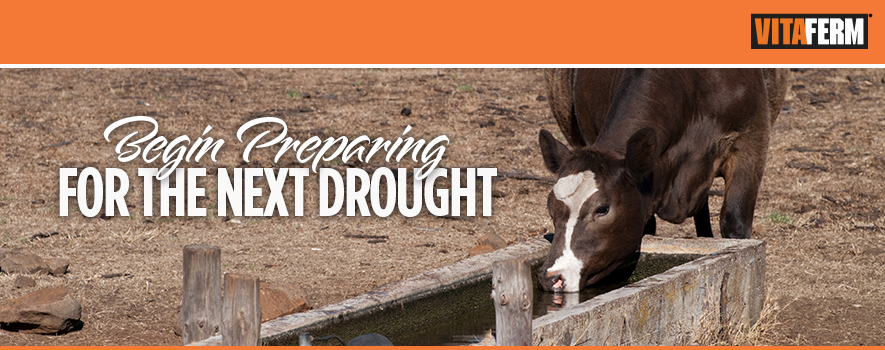
by Patrick Gunn, Iowa State University
It is no secret that the Southeast experienced a significant drought in 2016. Historically, droughts tend to move north and west, and, as such, those of us in the Midwest should be planning ahead for potential forage restriction. This projected drought highlights the necessity of making plenty of good-quality forage early in the growing season and being proactive about a drought-management plan in order to avoid an emergency feed situation, which we experienced in 2012 and 2013.
Perhaps, unfortunately, the Midwest weather that promotes a great forage-growing environment does not coincide with optimal weather for producing dry forages. In many instances, wet spring weather delays the first cutting, resulting in mature hay that is decreased in quality, palatability and digestibility. If harvest is not delayed, oftentimes the window of opportunity for optimal drying is reduced, resulting in hay that is baled either too wet or after it has been rained on, again, resulting in reduced quality at the time of feeding. In both of these circumstances, reduced hay quality and palatability will likely lead to increased waste at the feeder, particularly if bales have been stored outside.
So, as we begin to think about the 2017 forage season, here are some management tips and considerations to stretch our forage budget a bit further.
- Consider making baleage early in the growing season. Proper implementation of a baleage feeding system can overcome many potential disadvantages of first-cutting dry hay, including poor nutritional quality, dry-matter loss and waste. Best management practices for baleage production can be found in a new factsheet from the Iowa Beef Center at http://store.extension.iastate.edu/product/ibcr202.
- Start stockpiling dry hay now. On average, the Midwest was blessed with lots of good-quality hay in 2016. It may be prudent to hang on to that excess through 2017 and into 2018.
- Assess your forage storage. Research in Missouri, Tennessee and Nebraska has shown that hay storage and feeding losses combined can be anywhere from 5%-40% depending on storage methods used. Fairly low-cost storage modifications can reduce losses significantly. Improved storage conditions usually result in reduced waste at the feeder, as well. I argue that producers eventually pay for a hay storage facility either through buying a building or storage losses incurred over multiple years.
- Critically evaluate your feeding methods. If forage resources are going to be limited, consider limit-feeding options that are available to you. Switching to a total mixed ration (TMR) may require infrastructure upgrades that can be costly up front, but are almost always a profitable investment in the long run. For smaller producers, limit-feeding forage by restricting access to the feeder may be the best alternative to reduce intake and/or waste. Purdue research has shown that cows can consume their maximum daily intake of dry matter in as little as six hours per day. Limiting access to hay and supplementing energy and protein as needed will likely be cheaper than ad libitum hay access if and when hay prices increase.
- Use alternative forages. Although corn silage, corn stover/stalks, and cover crops may not be considered a true alternative anymore, don’t overlook the value of these feedstuffs for your winter-feeding strategy.
Additional Information from Kevin Glaubius, BioZyme® Director of Nutrition & Technical Sales
Based on the potential for drought in 2017 one more preventative measure that producers should consider is insuring that the grass your cows consume is fully digested. Amaferm® has shown to increase fiber digestibility meaning cows meet energy requirements sooner and eat less saving feed for later in the season. Feeding VitaFerm® (which contains Amaferm) early in the season it could mean an extra 1-2 weeks of grazing through improved feed efficiency earlier in the year which leads to more stockpiled grass when a drought hits. Preparation is critical for this to work as once the feed is gone it is too late to have a positive effect. For more information on stretching your pastures contact a dealer near you or the Area Sales Manager in your area.


